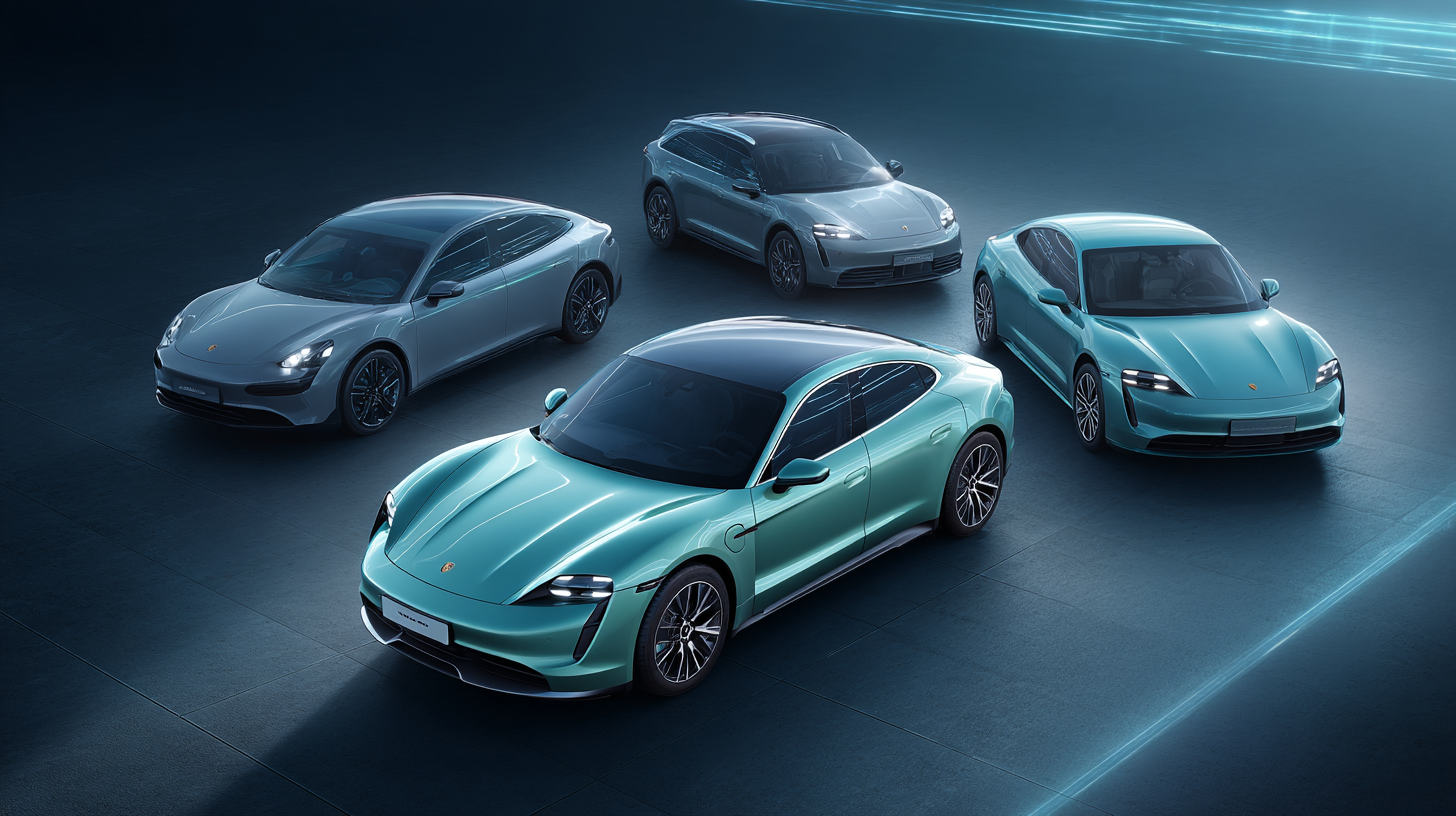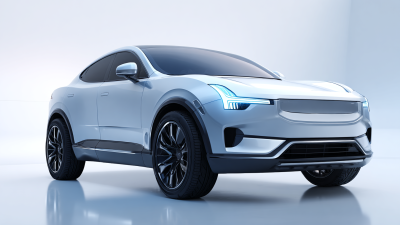Leave Your Message
The electric vehicle (EV) market has witnessed unprecedented growth in 2023, driven by advancements in technology, environmental considerations, and shifting consumer preferences. According to a recent report by the International Energy Agency (IEA), global electric car sales surged to 10 million units in 2022, marking a 55% increase over the previous year, and this trend is expected to continue in 2023. As more manufacturers launch innovative Electric Car Models, the competition intensifies, propelling further enhancements in battery efficiency, range, and charging infrastructure. Data from BloombergNEF projects that by 2040, EVs could make up 58% of global passenger vehicle sales, underscoring the transformative impact of electric mobility. This article delves into the leading Electric Car Models that are defining the landscape this year, providing insights into their features, performance, and the latest trends shaping the industry.

The electric vehicle (EV) market in 2023 is witnessing unprecedented growth, driven by a combination of consumer demand, technological advancements, and supportive government policies. According to recent data from the International Energy Agency (IEA), global electric car sales have surged to approximately 10 million units, representing a 35% increase compared to the previous year. This vigorous growth reflects a major shift in consumer preferences as electric vehicles become more mainstream, particularly in regions such as Europe and North America.
Furthermore, the market is seeing a significant diversification of models and brands. Research from BloombergNEF indicates that by the end of 2023, nearly 30% of new car sales are projected to be electric, with numerous manufacturers expanding their EV lineups. Tesla continues to lead the charge, but emerging competitors like Rivian and Lucid Motors are gaining traction with innovative products. Additionally, traditional automakers like Ford and GM are rapidly transitioning to electric offerings, reflecting a broader industry commitment to sustainability and carbon neutrality. This dynamic landscape suggests that 2023 is not only a pivotal year for electric vehicles but also a glimpse into a future where EVs dominate the automotive sector.
The global electric vehicle (EV) market is experiencing a significant transformation as rising environmental concerns and technological advancements fuel adoption. The demand for robust charging infrastructure is paramount; the worldwide electric vehicle charging gun market is projected to grow from $423 million in 2023 to $3.1427 billion by 2030, reflecting a compound annual growth rate (CAGR) of 33.1%. This remarkable growth indicates an increasing commitment to enhancing charging networks, essential for facilitating the widespread use of electric vehicles.
In the United States, the electric vehicle market is also on a remarkable growth trajectory, expected to reach $137.43 billion by 2028, with a CAGR of 25.4%. This upward trend illustrates not only consumer interest but also the government's supportive policies aimed at encouraging electric vehicle adoption. North America, as the third-largest EV market globally, is anticipated to register a CAGR of 16.1% throughout the forecast period. Such data highlights the pivotal role of various factors, including regional regulations, consumer awareness, and infrastructure development, in driving electric vehicle adoption across different regions.
| Model | Range (miles) | Price ($) | Charging Time (hrs) | Sales (Units) |
|---|---|---|---|---|
| Model A | 300 | 35,000 | 8 | 250,000 |
| Model B | 250 | 30,000 | 6 | 150,000 |
| Model C | 400 | 50,000 | 10 | 100,000 |
| Model D | 350 | 40,000 | 4 | 180,000 |
| Model E | 320 | 45,000 | 5 | 120,000 |
In 2023, electric vehicles (EVs) continue to transform the automotive landscape, with several models emerging as frontrunners in performance and features. According to the International Energy Agency (IEA), global EV sales surged by 55% in 2022, and this momentum carries into 2023, making data-driven insights crucial for understanding market trends. Notable models include the Tesla Model 3, which dominates with a range of up to 358 miles and impressive acceleration, boasting a 0-60 mph time of just 3.1 seconds. Its robust software updates further enhance performance over time, securing its position in consumer preference.
Another standout is the Ford Mustang Mach-E, which has gained a reputation for its balance of power and practicality. With a range reaching up to 312 miles and a powerful dual-motor option achieving 0-60 mph in about 3.5 seconds, it caters to both performance enthusiasts and eco-conscious drivers. Additionally, features like the large infotainment screen and advanced driver-assistance systems underscore the growing trend of integrating cutting-edge technology in EVs. As competition intensifies, manufacturers are increasingly focusing on optimizing battery efficiency and sustainability, as reflected in the recent report from BloombergNEF, predicting that by 2025, EV price parity with traditional vehicles will be achieved, further catalyzing adoption.
This chart illustrates the performance metrics of leading electric vehicle models in 2023, focusing on key features such as range (miles) and acceleration (0-60 mph in seconds).
In 2023, consumer preferences in the electric vehicle (EV) market have shifted significantly, as evidenced by recent surveys and data reports. A study conducted by the International Council on Clean Transportation revealed that 62% of potential car buyers are now considering purchasing an EV, up from 48% in 2021. Furthermore, a report from the automotive industry analyst firm enabled the insight that range anxiety is diminishing, with 74% of respondents indicating that a range of over 250 miles meets their needs, allowing manufacturers to focus on producing vehicles with longer ranges to meet this evolving demand.

When it comes to features, buyers are increasingly prioritizing advanced technology and sustainability. According to a recent poll by AutoTrader, 58% of consumers cited technology integration, such as infotainment systems and driver-assist features, as the key factor influencing their purchasing decision. Moreover, the trend towards eco-friendly materials and manufacturing processes is gaining traction, with 45% of consumers expressing a preference for brands that emphasize sustainability.
Tips: When considering an EV, think about your daily driving range and ensure the model you choose has ample real-world mileage. Also, prioritize models that offer robust tech features that can enhance your driving experience and provide added convenience. Finally, research brands that are committed to sustainability, as this may reflect their overall corporate responsibility and product quality.
As we look ahead to the electric vehicle (EV) market beyond 2023, a combination of technological advancements and shifting consumer preferences will shape the landscape. According to a report by BloombergNEF, global electric vehicle sales are projected to reach 26 million units by 2030, accounting for 28% of the total vehicle market. This dramatic increase is driven by the growing demand for sustainable transportation solutions and advancements in battery technologies that are making EVs more affordable and accessible.
Additionally, the International Energy Agency (IEA) forecasts that the number of electric cars on the road could rise to over 145 million by 2030, necessitating a substantial expansion of charging infrastructure. Governments worldwide are implementing stricter emissions regulations and offering incentives for EV adoption, further propelling the transition towards electric mobility. As innovation continues to enhance range and performance, the EV market is not just a trend but a transformative movement that is set to redefine personal transportation in the coming decade.







